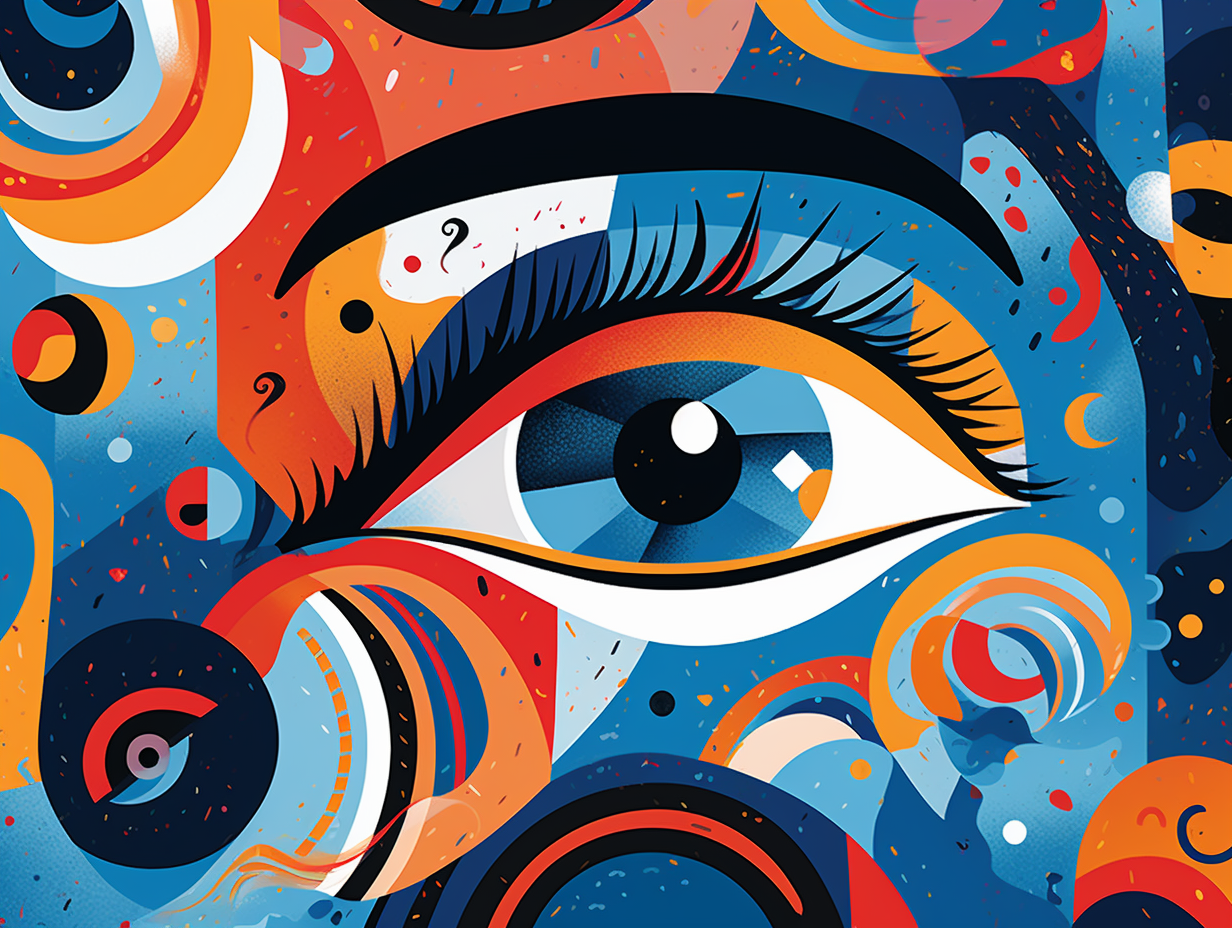Discover the Magic: Top 13 Eye-Popping Fun Facts About Eyes You Never Knew!

1. Goat Eye-SPY
Well butter my biscuit and call me a goat, these bearded lawnmowers are hiding a secret that'll have you saying "eye didn't see that coming!": Goats have horizontally-shaped pupils which expand their line of sight, enabling them to see predators sneaking up on them while they munch away, and their eyes are capable of rotating to stay level with the ground, making them the 007s of the herbivore world.
Source => redwoodhill.com
2. Blink Insurance
Feeling the need to put your screens on blinkers' insurance? Here's the scoop: Blinking is crucial for eye health as it clears debris, nourishes with oxygen, prevents dryness, and averages 15-20 times per minute - but computer use reduces that rate by 66%, increasing the risk of eye infection. So have a blinking good time and take screen breaks to keep your peepers in tip-top shape!
Source => healthline.com

Did you know that coconut oil and cedarwood essential oil can turn your smelly feet into a fresh paradise? Discover how these natural ingredients work their magic! 🥥🌲
=> Fun Facts about Hygiene
3. Mice in Grayscale
Mice: the real-life version of a knock-off smartphone with limited color display settings! But don't be too quick to judge these critters in grayscale: it turns out that most mammals, including our whiskered friends, possess only 2 types of cone cells for detecting green and blue/ultraviolet (UV) light, as opposed to humans who flaunt 3 distinct color-sensing cones. Recent scientific investigations have even uncovered a color vision circuit in mice that could potentially illuminate our understanding of how humans process colors with our own peepers.
Source => nih.gov
4. Swiveling Barreleye Fish
Talk about having eyes in the back of their head: The barreleye fish is gifted with tubular, light-sensitive eyes that can swivel freely within its transparent, fluid-filled head shield, enabling it to detect the subtle bioluminescent glow of its prey while skillfully navigating through the tricky tentacles of drift-jellies in search of a tasty morsel.
Source => earthlymission.com

5. Turbocharged REM Sleep
Who needs a turbocharger when you've got eyeballs in overdrive: During Rapid Eye Movement (REM) sleep, our eyes whiz around like a teenager learning to drive stick-shift, reaching angular speeds of up to 900 degrees per second as they perform the fastest movements the human body is capable of producing, leaving scientists to wonder if they're simply chasing dreamy visions.
Source => coopervision.com
6. Four-Eyed Fashionista
Whoever said two heads are better than one must have been thinking of the fish-bowl half full: because in the underwater world, the four-eyed fish outsmarts them all with its four-eyed vision! This swanky swimmer hosts fish-tastic soirees in mangrove forests and river deltas, always dressed to impress with designer goggles for land and sea: Anableps anableps possesses a unique retina that enables it to perceive both aerial and aquatic light with specific regions catering to upwelling light filtered through water, making it extra sensitive to longer wavelength light—perfect for catching all the action in the murky waters of its natural habitat.
Source => ncbi.nlm.nih.gov
7. Night-vision Goggles
Who turned off the lights? Oh, it's just nature's night-vision goggles at work: Some nocturnal mammals have a special layer in their eyes called the tapetum lucidum, which enhances their visual sensitivity in low light conditions, but not all of them can outperform human night vision. Beware, though, as some therapeutic drugs can damage this layer in dogs, causing irreversible loss of tapetal reflectivity and pigmentation changes.
Source => sciencedirect.com
8. Colossal Squid Stare-Down
In a world where size does matter, the colossal squid emerges as the eyeball champion that could surely win a staring contest against the world: the titan of calamari flaunts the largest peepers ever gawked at in the animal kingdom, measuring a whopping 27 cm – or roughly the diameter of a soccer ball – in size, with pupils expanding to 80-90 mm across, enabling these underwater mammoths to soak up every glimmer of light in the ocean's darkest depths, and even boasting their built-in flashlight organs for extra flair.
Source => tepapa.govt.nz
9. Muscle-Packed Peepers
Feeling overwhelmed by people flexing their biceps? Well, let me tell you about eyes, the unsung heroes that deserve all the muscle cred in the world: With a whopping six muscles, eyes are the organs packing the most muscle power in your body, flaunting their lightning-fast reflexes every time you blink - talk about an eye-opening revelation!
Source => mypharmacyandoptical.com

10. Chameleon Multitasking
Chameleons are like the ultimate multitaskers of the animal kingdom, performing impressive ocular acrobatics that even their moms would approve of: these masters of disguise can simultaneously track two separate moving targets with just one eye, using a blend of smooth and abrupt eye movements, making them the only vertebrates capable of this incredible feat.
Source => pubmed.ncbi.nlm.nih.gov
11. Mantis Shrimp Superpowers
Move over, Marvel superheroes: the mantis shrimp has powers that would make even the most colorful comic book character green with envy! These aquatic avengers can see ultraviolet colors that humans can't even dream of, all thanks to their mycosporine-like amino acids (MAAs) which act as filters, separating ultraviolet light into five different colors and making communication and shrimp detection a walk in the park! Seriously, science: give us a mantis shrimp origin story already!
Source => latimes.com
12. Baby Mood-Ring Eyes
Babies: the ultimate mood-ring chameleons! As their tiny eyes observe the world around them, they might just have a color-changing surprise in store: Eye color is determined by genetics and melanocyte activity, cells responsible for producing melanin. Although babies typically have lower melanin levels at birth, these levels can increase and lead to eye color changes throughout their first year, debunking the myth that most Caucasian babies are born with blue eyes.
Source => pampers.com
13. Deceiving Pupils
Your eyes might be masters of deception, toying with our emotions like a fickle rom-com heartthrob: pupil dilation indicates excitement or fear due to adrenaline response, but can also result from focusing close-up or fluctuating light levels, making it a sneaky, unreliable emotion meter.
Source => universityoptometry.com
Related Fun Facts




















